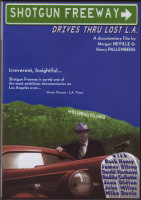Shotgun Freeway: Drives Through Lost L.A. Filming Locations

Where was Shotgun Freeway: Drives Through Lost L.A. filmed? Shotgun Freeway: Drives Through Lost L.A. was filmed in 3 locations across United States in the following places:
Shotgun Freeway: Drives Through Lost L.A. Filming Locations
Beverly Hills is a city in California's Los Angeles County. Home to many Hollywood stars, it features the upscale shopping street of Rodeo Drive. The expansive Beverly Gardens Park has fountains and rose gardens, plus an illuminated Beverly Hills sign. The 1920s Greystone Mansion is the backdrop for many films. Known as a celebrity haunt, The Beverly Hills Hotel is set in tropical gardens and has a poolside cafe.
A larger-than-life symbol of the entertainment business, Hollywood beckons tourists with landmarks like TCL Chinese Theatre and star-studded Walk of Fame. Highlights include Paramount Pictures, historic music venues like the Hollywood Bowl, and Dolby Theatre, home of the Oscars. Scenesters can choose from improv comedy clubs, retro-cool bars and velvet-roped nightclubs. Locals frequent eateries in nearby Thai Town.
Los Angeles is a sprawling Southern California city and the center of the nation’s film and television industry. Near its iconic Hollywood sign, studios such as Paramount Pictures, Universal and Warner Brothers offer behind-the-scenes tours. On Hollywood Boulevard, TCL Chinese Theatre displays celebrities’ hand- and footprints, the Walk of Fame honors thousands of luminaries and vendors sell maps to stars’ homes.
Shotgun Freeway: Drives Through Lost L.A. (1995)
A political and social history of Los Angeles, using old stills and news footage, contemporary footage, and commentary. Bert Corona is our guide for East Los Angeles, Buck Henry for Hollywood, David Hockney for the art scene, Elaine Young for Beverly Hills, Buddy Collette and Gene Norman for Central Avenue and music, Margaret Crawford and Joan Didion for the San Fernando Valley, James Ellroy for noir L.A., Frank Wilkinson on land use and L.A.'s poor, and, throughout, the observations of Mike Davis, L.A.'s pre-eminent social historian.
